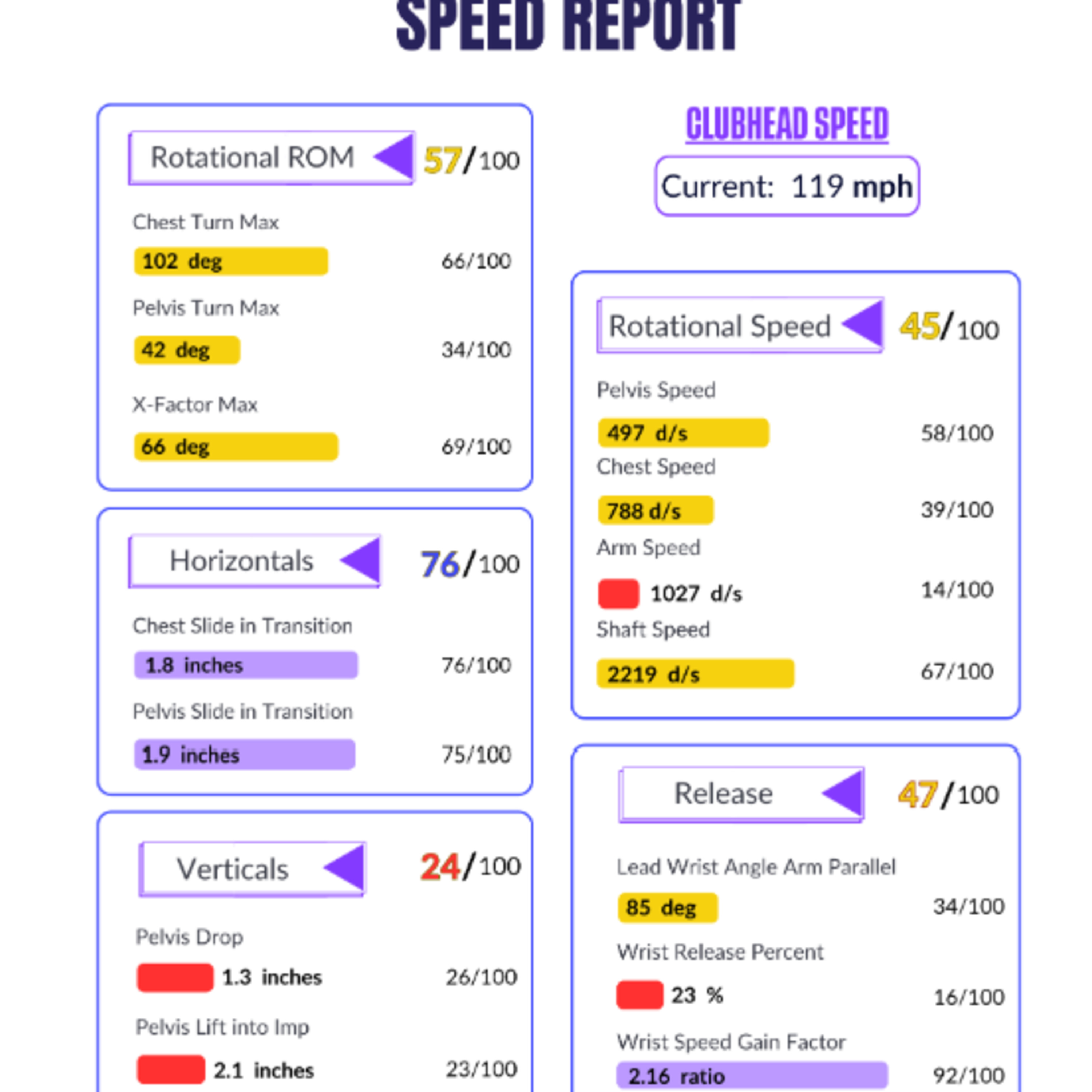#67 Åberg's Golf Swing A Biomechanical Analysis.
- Author
- Golf247.eu
- Published
- Sat 07 Dec 2024
- Episode Link
- https://podcasters.spotify.com/pod/show/puttin-pro/episodes/67-bergs-Golf-Swing-A-Biomechanical-Analysis-e2s02po
The Podcast, Comprehensive Analysis of Ludvig Åberg’s Golf Swing
Ludvig Åberg, a rising star on the PGA Tour, has demonstrated exceptional skill and consistency in his early career. With a technically sound swing powered by biomechanical precision, Åberg has quickly climbed the ranks, earning his first PGA Tour victory in 2023 and finishing as runner-up at the 2024 Masters Tournament. Currently ranked as World #5, Åberg's success is rooted in his ability to optimize horizontal and rotational mechanics, paired
with an exceptional ability to generate power and accuracy through his wrist action.
To better understand the mechanics behind his swing, this report combines advanced data from the Sportsbox AI 3D App and Åberg's Speed Report to explore the strengths and areas of improvement that set him apart.
Sportsbox AI Education
The Sportsbox AI 3D App is a cutting-edge tool for analyzing golf swings through precise 3D motion data, making it an essential resource for serious golf professionals.
This winter is the perfect time to dive into biomechanics and kinematics in golf. By leveraging the Sportsbox AI 3D App and its educational offerings, golfers and coaches can
gain critical insights into movement and performance.
To enhance expertise, Sportsbox AI offers two certification courses:
- Level 1 Certification: An introduction to the app’s functionality and the fundamentals of biomechanics, covering the differences between kinetics and kinematics and the importance of six degrees of freedom.
- Level 2 Certification: A more advanced course focusing on interpreting 3D data, graph analysis, linear and angular velocities, and the interplay of movement and forces
in the golf swing.
Completing these courses and using the Sportsbox AI 3D App can significantly elevate coaching skills and help professionals stand out. The winter months provide an excellent opportunity to invest in this education and prepare for success in 2025.
Summary of Åberg’s Swing Performance.
This report analyzes Åberg’s swing using 3D motion analysis and data from the Sportsbox AI Speed Report, focusing on five key areas: rotational movement, horizontal transition,
vertical mechanics, rotational speed, and wrist release. Åberg excels in several areas, particularly his horizontal transition, chest rotation, and wrist speed, all of which
contribute to his high clubhead speed and precision.
Key Strengths in Åberg's Swing
1. Efficient Horizontal Transition:
Åberg smoothly transitions his chest and pelvis toward the target during the backswing, enabling dynamic movement and consistent ball contact. His Chest Slide (1.8 inches) and Pelvis Slide (1.9 inches) are both in the 75th percentile among his peers, placing him in the top quartile of professional golfers.
2. Powerful Chest Rotation
With a maximum chest rotation of 102 degrees, Åberg ranks in the 66th percentile. His X-Factor Max—the difference between pelvis and chest rotation—is 66 degrees, which allows him to build strong tension for a powerful downswing. This rotational efficiency is critical for generating long drives and maintaining consistency.
3. Exceptional Wrist Speed
Åberg’s Wrist Speed Gain Factor of 2.16 is among the highest on the PGA Tour,
reflecting his ability to efficiently transfer energy from his arms to the club. This results in a clubhead speed of 119 mph, which exceeds the group average of 117 mph and places him in the 66th percentile among professional golfers. His superior wrist action is a defining characteristic of his swing, contributing significantly to his power and accuracy.
Areas for Improvement
While Åberg's horizontal and rotational mechanics are exemplary, his vertical movements show room for enhancement:
- Pelvis Drop: Measured at 1.3 inches (26th percentile), Åberg’s vertical movement during transition is lower than average, limiting the additional power that could be gained through upward thrust.
- Pelvis Lift into Impact: At 2.1 inches (23rd percentile), Åberg’s reduced lift may prevent him from fully maximizing vertical force.
Despite these metrics, Åberg compensates with consistent speed, dynamic transitions, and effective use of other kinematic factors.
Conclusion:
Ludvig Åberg’s swing is a masterclass in biomechanical efficiency. His horizontal transitions, rotational mechanics, and wrist speed enable him to generate power and precision, making him a standout performer on the PGA Tour. With a clubhead speed of 119 mph and exceptional use of horizontal and rotational dynamics, Åberg has quickly established himself as a serious contender in every tournament he enters.
By combining the insights from Åberg’s swing with advanced tools like the Sportsbox AI 3D App and its certification courses, golfers and coaches can elevate their game to new heights. The winter months offer the perfect opportunity to invest in biomechanics and kinematics education to unlock maximum potential in 2025.
